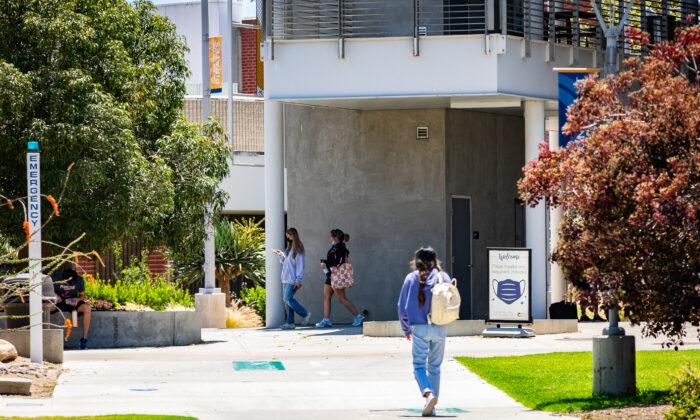Looking to increase access to college courses and career pathway programs, California Gov. Gavin Newsom and Sonya Christian—chancellor of California Community Colleges—sent a proposal June 3 to the U.S. Department of Education requesting that eligibility for Title IV financial aid be extended to students without a high school diploma or equivalent.
About 4 million Californians could receive federal financial aid to attend college classes if the Education Department approves the plan—known as an Ability to Benefit proposal.
The plan would increase access to higher education, training, and career opportunities across the state, according to the statement. Support would include access to counseling and tutoring, math and writing workshops, and accessibility services.
Proponents suggested the plan would be a game-changer for some disadvantaged students.
“This initiative has the ability to change lives,” Ms. Christian said in the governor’s statement. “It will open college and career opportunities for adult learners seeking to pursue their academic aspirations, regardless of their background or circumstances.”
She said access to federal funding would allow more Californians to take advantage of college courses and career pathway programs.
“By removing barriers to financial support, we’re moving students closer to success,” Ms. Christian said.
With the state seeking to improve success rates and higher education opportunities through its Guided Pathways program—with structured programs to allow students to choose courses which lead to credentials or degrees—and dual enrollment—where students can earn college credits while pursuing high school diplomas—supporters of the proposal said it would facilitate access to advanced coursework.
Existing federal regulations require high school diplomas or an equivalent to qualify for financial aid. Students simultaneously enrolled in college programs while pursuing high school diplomas are currently not eligible for aid, according to the federal student aid website.
Certain exemptions allow aid for students who participate in eligible career pathway programs—which offer “rigorous and high-quality education,” training, and other services to prepare them for jobs.
If the proposal is approved by the Department, more students would have access to money—which proponents suggest would allow them to overcome financial barriers to higher education and career programs.
Skeptics argued that community colleges could be affected by increased enrollments and suggested that students lacking high school diplomas might not be ready to take college courses.
“If they struggled with high school, why wouldn’t they struggle with college?” one critic posted on June 3 on X in response to the governor’s announcement.
Another Californian agreed and said support should be provided to help students pursue secondary school graduation before focusing on college programs.
“If you want to work out a way to assist them in getting their GED, that can be considered,” the skeptic posted June 3 on X. “But without a high school diploma or equivalent, they’re not college-ready students.”
Some Republican lawmakers said the governor’s budget proposal—which cut $500 million from college funding to address the state’s deficit—will prevent some students from achieving their educational goals.
“You know what would help Californians pursue a higher education degree?” the California Assembly Republican Caucus posted June 3 on X. “Not cutting half a billion dollars from the middle-class scholarship.”







